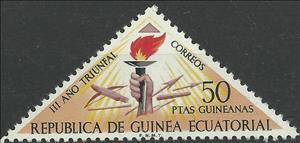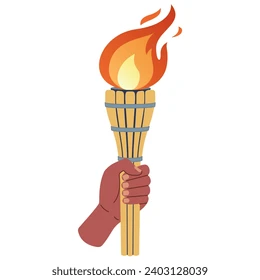Stamp: Torch (Equatorial Guinea 1972)
Torch (Equatorial Guinea 1972)
01 January (Equatorial Guinea ) within release III triumphant year goes into circulation Stamp Torch face value 50 Equatorial Guinean peseta
| Stamp Torch in catalogues | |
|---|---|
| Edifil: | Edi:GQ 17 |
| Yvert et Tellier: | Yt:GQ 24 |
| Stamp Number: | Sn:GQ 15 |
| Michel: | Mi:GQ 17 |
Stamp is horizontal format.
Stamp Torch it reflects the thematic directions:
A hand is a prehensile, multi-fingered organ located at the end of the forearm or forelimb of primates such as humans, chimpanzees, monkeys, and lemurs. A few other vertebrates such as the koala (which has two opposable thumbs on each "hand" and fingerprints remarkably similar to human fingerprints) are often described as having "hands" instead of paws on their front limbs. The raccoon is usually described as having "hands" though opposable thumbs are lacking.
A torch is a stick with combustible material at one end which can be used as a light source or to set something on fire. Torches have been used throughout history, and are still used in processions, symbolic and religious events, and in juggling entertainment. In some countries, notably the United Kingdom and Australia, "torch" in modern usage is also the term for a battery-operated portable light.
The Kionga Triangle (German: Kionga-Dreieck, Portuguese: Triângulo de Quionga) was a small region of German East Africa situated at the mouth of the Ruvuma River. The Ruvuma served as the border between the German colony and Portuguese Mozambique, and the Kionga Triangle was the only section of German East Africa south of the river. Its principal settlement was Kionga (now Quionga ) which had a population of 4,000 in 1910. It became a German possession in 1894 but came under Portuguese control in April 1916 during World War I. The post-war Treaty of Versailles reaffirmed that the river was the border between Tanganyika, then under British control, and Portuguese Mozambique. The triangle was the only territory that the treaty awarded to Portugal.


